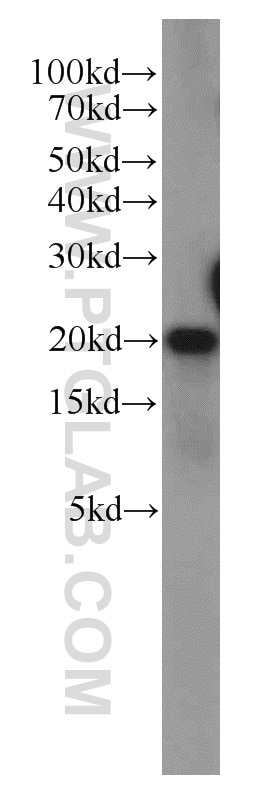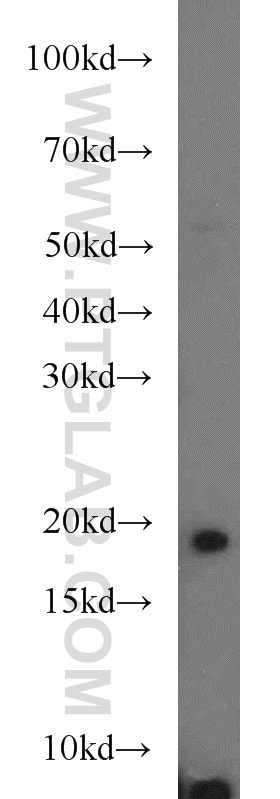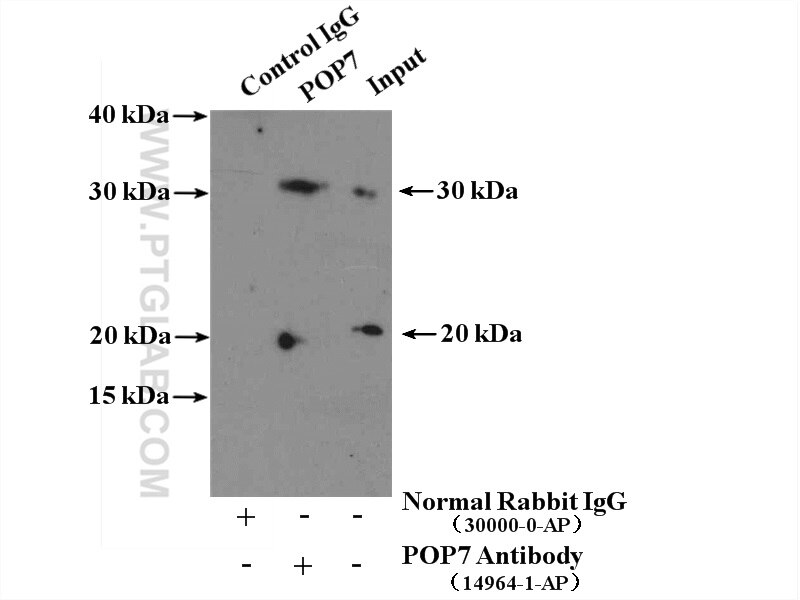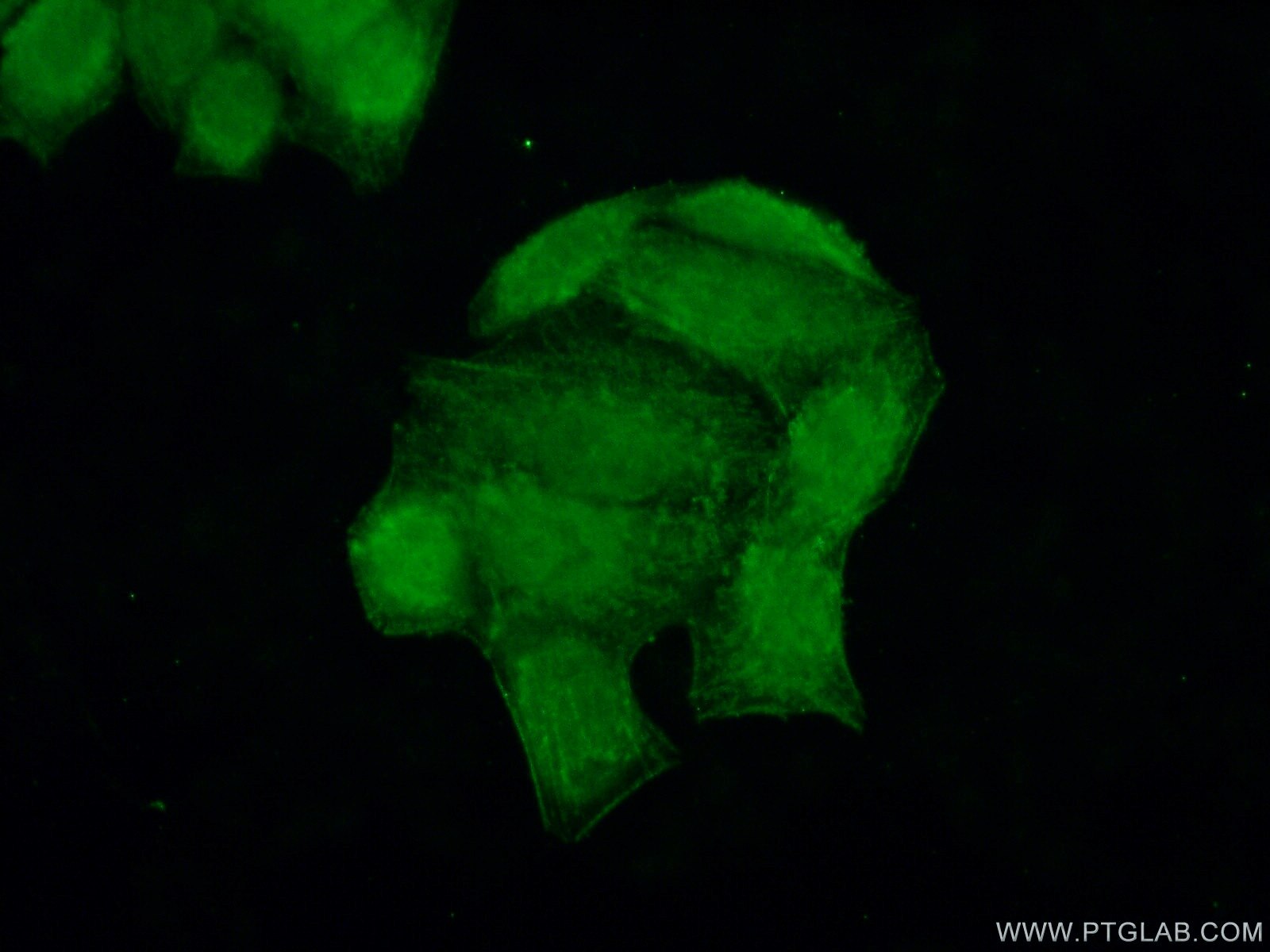Tested Applications
| Positive WB detected in | HeLa cells |
| Positive IP detected in | HeLa cells |
| Positive IF/ICC detected in | HeLa cells |
Recommended dilution
| Application | Dilution |
|---|---|
| Western Blot (WB) | WB : 1:500-1:1000 |
| Immunoprecipitation (IP) | IP : 0.5-4.0 ug for 1.0-3.0 mg of total protein lysate |
| Immunofluorescence (IF)/ICC | IF/ICC : 1:50-1:500 |
| It is recommended that this reagent should be titrated in each testing system to obtain optimal results. | |
| Sample-dependent, Check data in validation data gallery. | |
Published Applications
| WB | See 1 publications below |
Product Information
14964-1-AP targets POP7 in WB, IF/ICC, IP, ELISA applications and shows reactivity with human samples.
| Tested Reactivity | human |
| Cited Reactivity | human |
| Host / Isotype | Rabbit / IgG |
| Class | Polyclonal |
| Type | Antibody |
| Immunogen | POP7 fusion protein Ag6827 Predict reactive species |
| Full Name | processing of precursor 7, ribonuclease P/MRP subunit (S. cerevisiae) |
| Calculated Molecular Weight | 16 kDa |
| Observed Molecular Weight | 20 kDa |
| GenBank Accession Number | BC001430 |
| Gene Symbol | POP7 |
| Gene ID (NCBI) | 10248 |
| RRID | AB_2166488 |
| Conjugate | Unconjugated |
| Form | Liquid |
| Purification Method | Antigen affinity purification |
| UNIPROT ID | O75817 |
| Storage Buffer | PBS with 0.02% sodium azide and 50% glycerol , pH 7.3 |
| Storage Conditions | Store at -20°C. Stable for one year after shipment. Aliquoting is unnecessary for -20oC storage. 20ul sizes contain 0.1% BSA. |
Protocols
| Product Specific Protocols | |
|---|---|
| WB protocol for POP7 antibody 14964-1-AP | Download protocol |
| IF protocol for POP7 antibody 14964-1-AP | Download protocol |
| IP protocol for POP7 antibody 14964-1-AP | Download protocol |
| Standard Protocols | |
|---|---|
| Click here to view our Standard Protocols |
Publications
| Species | Application | Title |
|---|---|---|
J Cell Mol Med Xanthatin synergizes with cisplatin to suppress homologous recombination through JAK2/STAT4/BARD1 axis in human NSCLC cells. |









